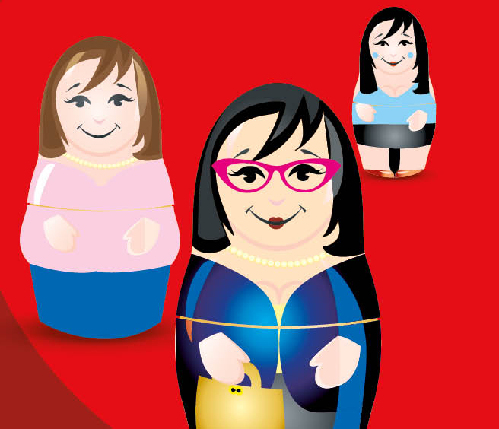Double talk: Women through the lens
 0 Comment(s)
0 Comment(s) Print
Print E-mail
ChinAfrica, December 12, 2011
E-mail
ChinAfrica, December 12, 2011
|
|
|
Women Through The Lens [File Photo] |
Song Meifeng, an editor at the Norstar Media & Communications Inc., and Vimbayi Kajese, a Zimbabwean news presenter on China's CCTV-9 channel, explain the dynamics of objectification in their home countries.
Song Meifeng: Three Images
If you are male, visualize an image of your ideal wife; if you are a female, visualize your ideal self. Most likely the picture is the same: young and beautiful, blessed with a great career but also happy to do housework. It's a perfect image. But it's also fiction borne out of advertising.
We are surrounded by ads – on the Internet, on TV, at the movies, even on mobile phones. According to researchers, a man in the United States on average sees 1,600 ads a day. They are omnipresent and their influence is subtle and powerful. There are three kinds of women featured in Chinese advertising.
The first type is the traditional woman, simple and unsophisticated. She is gentle and motherly, often next to a washing machine or a stove and happy about it. This image has existed in advertising for a long time, and encourages the idea that women take care of family members and belong to families.
The second type is the romantic woman, young and dreamy. Very often, she appears in ads for clothing, shampoo, jewelry and so on. She is charming, beautiful and affectionate, always with a handsome guy by her side. She is an object for the man to appreciate; her confidence is based on her appearance and the man's admiration.
The third type is the career woman. Her image is often used to sell office products. She appears to be mature, independent and makeup-free. She is always single.
These images can have a negative influence on women in real life. They set a standard for hairstyle, weight and posture. Women can end up paying more attention to their appearance than necessary. At the same time, men begin to assume the advertising standard is normal when perhaps it is not.
The images create a kind of social pressure. Although they disseminate three types of women, these three effectively cancel each other out. Hence, the career woman is always considered by men as undesirable, but the traditional woman lacks vitality. Only women who are wealthy but carefree are worthy of admiration. These images rob women of their individuality, and promote unrealistic ideas in men.
But things have begun to change. More women are educating themselves. In recent years, media literacy is garnering more attention in China. As the concept gains hold, people will gradually have a better understanding of advertising's power.







Go to Forum >>0 Comment(s)